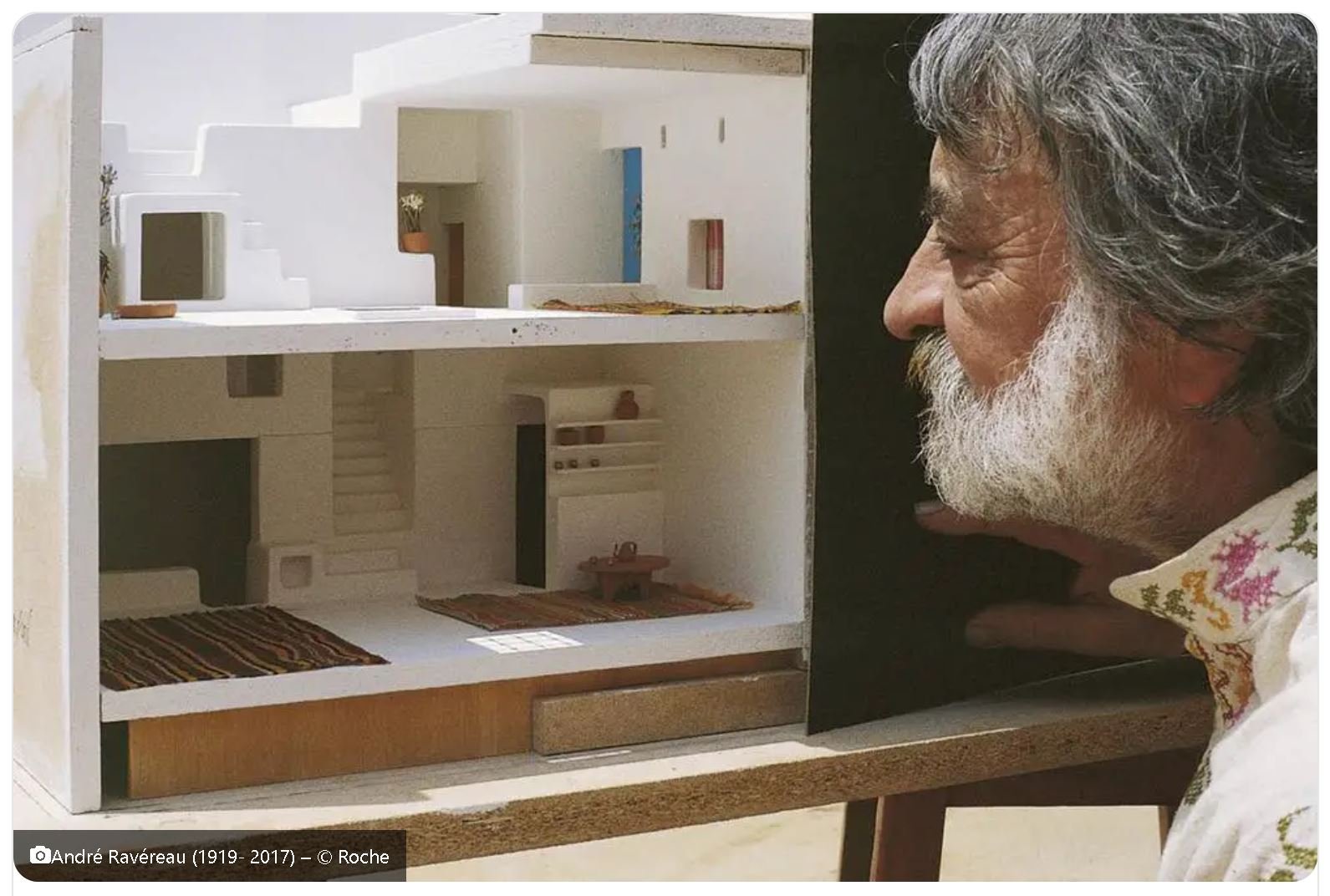M’Zab Valley – Many were fascinated by this stripped-down, functional architecture, perfectly adapted to the environment and the way of life of the local population. From François Pouillon, to André Ravéreau, via Ricardo Bofill, Frank Lloyd Wright or even Charles-Edouard Jeanneret-Gris, better known as Le Corbusier, they have all fallen under the spell of the pentapolis, not hesitating to be inspired by it.
Mosquee de Sidi Brahim – Ghardaia
They will confess, whenever the opportunity arose, how Ibadi architecture had influenced their work and their urban designs.
Le Corbusier was very much in love with the constructions of the capital of M’zab, Ghardaïa. It was in 1955 that the French architect discovered the pentapolis. Once the shock of this discovery had passed, and after an incubation period which allowed him to humanize his methodological approach, he created the chapel of Ronchamp, inaugurated in 1955, an architectural masterpiece whose inspiration came from the Sidi Brahim de Agherm de Tajnint (Kser de El Atteuf) mosque.
His fascination with this architecture “on a human scale” was so great that in 1956 he prepared the 10th International Congress of Modern Architecture (CIAM X) in Algiers, in order to bring architects and town planners from all over the world to visit its Casbah and of course the M’Zab valley. The meeting will not take place, due to the Algerian war.
André Ravéreau, for his part, discovered the cities of M’Zab in 1949 while he was a student at the Ecole des Beaux-Arts in Paris. The discovery of the Ibadi cities, in their immense austerity and their great functionality, made him aware of the contribution of “this architecture in the definition of new practices”.
After obtaining his diploma and despite the climate of war reigning in Algeria, he did not hesitate to return there. For André Ravéreau:
“Ibadi cities offer the most complete example of adaptation to the constraints of the environment, of an architecture and an urban planning that respects the environment”.
And for a better perception and approach of the place, he decided to set up his “desert workshop” in 1959, which would see “several generations of young architects come and confront themselves with this management of the territory respectful of cultural traditions and the natural context”. .
During his stay in the region, the French architect André Ravéreau did not want so much to reproduce the forms as to be interested “in the place, in the culture, in the climate to better inscribe his architectural project in the thickness of a culture “. And by far, his work on the region remains the most remarkable. It is he who will obtain the UNESCO World Heritage classification of the city of Ghardaïa.
His famous phrase “The M’zab is prestigious without the intention of prestige” sums up the essence of his vision.
“The balance of the M’zab society is expressed in its architecture: unity, social and religious equality, according to faith thus, all the houses have the same height, similar to the mosque.” Further on, he says again: “Each line expresses the being who made it. Like a suit that fits him: he feels comfortable inside, it’s neither too big nor too tight…”
This interest in Mozabite town planning, he will report in a very interesting book, entitled Le M’zab, a lesson in architecture, prefaced by the Egyptian Hassan Fathy and illustrated with photographs by Manuelle Roche, his companion in life. .
He writes in substance: “What strikes the observer here is the general unity of character. There are no two gestures, whether you build the dam, the mosque, the house… The builders reduced and purified all the reasons for influence or prestige and chose egalitarian solutions – no palace at M’ Zab – they were confronted only with the problems of defense and the environment”.
Translated from https://topdestinationsalgerie.com/vallee-du-mzab-une-pentapole-qui-a-inspire-de-nombreux-architectes-celebres/?utm_content=expand_article










